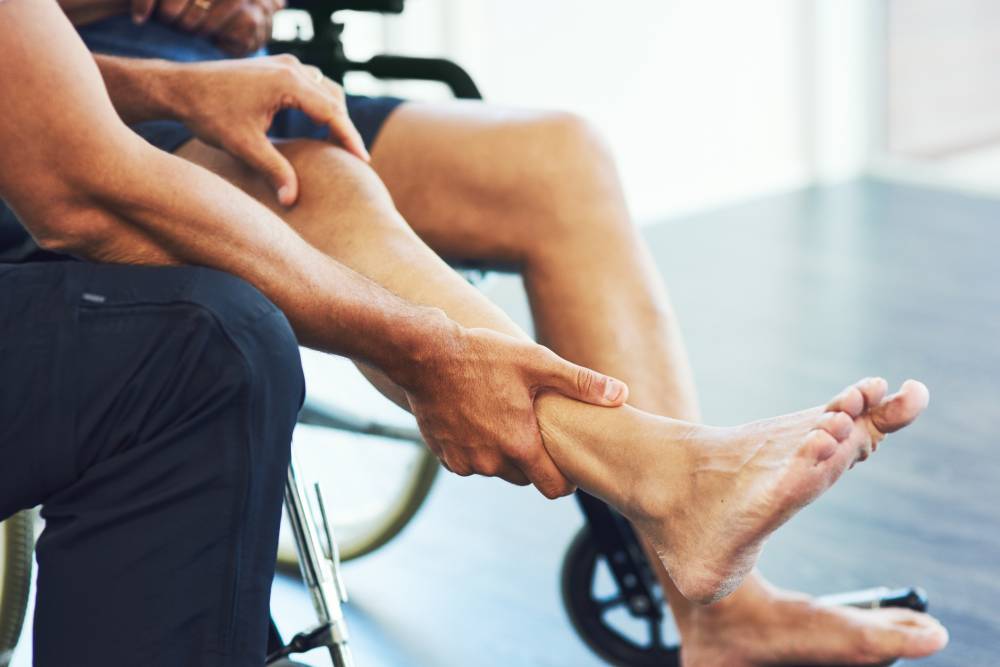With increasing age, the risk of experiencing various health problems becomes greater. Joint disorder is one of the most common health conditions found among the elderly. This disorder may come in many forms, one of them is contracture.
All About Contracture
Contracture is a condition when the elastic tissues of the body are replaced by non-elastic tissues. As aresult, these tissues become stiff and hard or unable to move normally. Contracture usually affects muscles, skin, and joints. The range of motion and function of certain parts of the body is limited because of contracture.
Joint contracture occurs when the joint capsule that connects two or more bones becomes stiff. Muscle contracture is characterized by shortened or stiffened muscles. Meanwhile, skin contracture happens when the skin shrinks due to injury.
Contracture can occur at any age. However, this condition is more common among older people. In the elderly, contracture often takes place in joints. This joint disorder may affect the quality of life of the elderly. For example, they may not be able to move their hands, stretch their legs, and straighten their fingers, making it difficult for them to perform daily activities such as picking up things, eating and drinking, or cleaning themselves.
The main symptom of contracture is a reduced ability to move the area of the body afflicted by contracture. Other symptoms include pain and swelling in the affected part of the body.
What Causes Contracture? The causes of contracture are varied, depending on the type and location of occurrence. In the elderly, contracture in the form of joint disorders can happen due to rheumatoid arthritis, fractures, and dislocation. Elderly people who have had a stroke are also prone to joint contracture because their nervous system is disrupted. In addition, contracture may be inflicted by complications after stroke.
Sometimes treatment in the form of post-stroke rehabilitation is not carried out properly, resulting in contractures. For example, patients are not actively exercising their feet affected by stroke. Patients with certain diseases who need to stay in bed for a long time are more likely to have contracture because they rarely move their bodies.
In general, the causes of contracture include:
• Brain and nervous system disorders, such as cerebral palsy and stroke
• Nerve damage
• Congenital defects
• Rarely move body parts, for example due to injury, illness, or passive lifestyle
• Traumatic injury or burn
• Inflammation, for example rheumatoid arthritis
What to Do to Avoid Contracture?
The main way to prevent contracture is to adopt an active lifestyle, including regular exercise. Also, be careful when doing activities that pose a risk of injury. For certain individuals with a higher risk factor for contracture, physical therapy may also be carried out as prevention. For example, elderly patients who undergo post-stroke care.
Properly taking care of a wound so it can heal faster will also reduce the risk of contracture that can take place when it is impossible to move feet for a long time due to the wound. For older people, positioning also affects the likelihood of contracture. For example, their feet should be put on a flat foot rest when they sit on a chair. When the feet are hanging down, contracture may occur at the tips of the toes.
Sleeping with legs in a bent position can also lead to contracture, so a pillow or bolster needs to be placed between the legs while sleeping.
What to Do if Contracture Already Happened?
When it comes to contracture, the “prevention is better than cure” phrase is particularly relevant. It is because, when there is a contracture, it takes a long time to heal. That’s why it is more important to try to prevent it before it already occurred. Treatment for contracture depends on its type and location. For the elderly, having a caregiver or therapist is very important to avoid more limitation of movements because the limitation will reduce quality of life. Common treatments include:
• Positioning: besides as a precaution, proper positioning during activities can reduce the severity of contracture.
• Physiotherapy/occupational therapy: therapy that is often part of post-stroke rehabilitation program helps to increase range of motion and to strengthen muscles.
• Assistive devices: the use of a cast or splint helps stretch the tissue in the affected area. There is also a continuous passive motion machine to move body parts afflicted by contracture.
• Electrical therapy: this therapy is often combined with other types of therapy with the aim of reducing pain and preventing loss of muscle strength.
• Medications: there are several types of medications that can help reduce the symptoms of pain and inflammation. For example, botulinum toxin to reduce muscle tension.
• Surgery: repairing body parts affected by contracture through surgery is usually carried out when the quality of life is severely compromised.
How to Keep Quality of Life with Contracture?
Undeniably, quality of life will be affected when a person experiences contracture. Elderly patients who suffer from stroke, for example. Limited movement and body function due to stroke increases if there ia acontracture complication.
The quality of life of the elderly can be maintained with the presence of professional and trained caregivers and therapists. They will get assistance in performing daily activities as well as training to reduce contracture symptoms with programs tailored to their specific conditions and needs.
Consistent therapy and exercise under the guidance of a caregiver/therapist can help them improve their mobility and impaired body functions. The role of their family is also needed as an added motivation so that they can regularly follow the exercise and therapy programs required for their quality of life.



